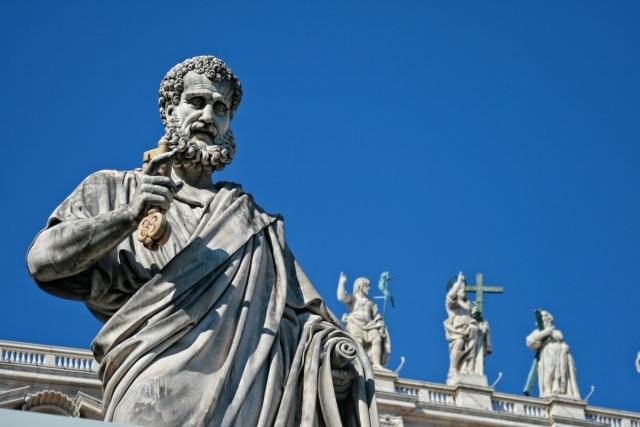
An intriguingly titled panel discussion was recently held in Rome called “The Next Pope.” The reason for holding the event, to discuss the National Catholic Register Rome correspondent Edward Pentin’s forthcoming book, “The Next Pope: The Leading Cardinal Candidates,” did not appear to be obvious or convincing.
Pope Francis is very sprightly, energetic and shows no sign of retiring. The panel discussion, which was predominantly organized by conservative Catholic thinkers from the U.S., looked more like a thinly disguised review of the current pontificate. The panelists assessed the world’s political situation in general and the Roman Catholic Church’s reaction to current events. Let’s take a look at the main theses that were discussed and decode them. Thesis No. 1: Francis’ papacy has significantly widened the geography of cardinal promotion, and now, cardinals often don’t actually know one another. The real meaning is that in this case, those who will be choosing the new pope might be subject to political manipulation. Thesis No. 2: The old debates between conservatives and progressives, which date back to the Second Vatican Council, have yielded to arguments between friends of Francis and his opponents, with the former believing that he is not so much a descendant of St. Peter as much as he is a descendant of Jesus, and the latter seeing him not as a “second Jesus,” but rather, the Antichrist. The real meaning is that this threatens to cast a shadow not just over Catholicism, but over Christianity as a whole. Thesis No. 3: The College of Cardinals may grow tired of Francis’ charisma and decide to elect someone who will slow down the speed of the reforms in the Catholic Church. The real meaning is that laymen and the episcopate cannot keep up with the pontiff; they need time to process his ideas, if that’s actually possible.
And finally, thesis No. 4. The next pope should know how the modern media work, but he should not be a slave to them. The real meaning is that the papacy and the Church’s media image is beginning to dominate their timeless foundations; the Church is trailing behind the world rather than leading it. This thesis requires additional analysis. Of course, the Argentine pope has in no way been the first to open the Holy See up to journalists. The Polish Pope St. John Paul II did that. However, Francis has added additional color to his interaction with the media. He didn’t shy away from talking to journalists, especially at first, as he entered into polemical discussions over longstanding beliefs in the Catholic Church, presenting arguments and refuting them. In other words, the pontiff has shown the press drafts of his reasoning instead of limiting his announcements to announcing final conclusions. But it has often happened that even the Vatican press pool, which flies with Francis, have picked up on some intermediate judgment and focused on it, creating big problems for the Holy See, which is accustomed to examining everything in a broader context and with carefully chosen language. The method of intellectual provocation which the pope sometimes uses has a right to exist. However, it requires the interlocutor to be brutally honest, and this has posed difficulty.
Nowadays, as you might have noticed, Francis has become more cautious. But the future of the papacy doesn’t boil down to a single figure. The Catholic Church is facing some serious challenges, which, this time, largely pertain to the United States. The election of President Donald Trump in 2016, which exposed a fault line in American society, couldn’t not affect the Catholic community as well. Something new was added to the traditional debate between Church liberals and conservatives — a political conflict between Trump’s Catholic supporters and opponents. American Catholic publications began to wander off into different trenches and hit out not just at each other, but at the hierarchy, too. This is becoming even more noticeable now in a presidential election year, with Trump seeking reelection, and those Catholics who oppose him are vigilantly keeping track of the episcopate and criticizing those steps which they identify as being supportive of the sitting head of state. In this way, the Church agenda is being extrapolated from the political agenda. For example, the important issue of standing up to racism is facing contradictory responses. Some propose integrating African American culture into the general fabric of American Catholic culture, while others are not open to further suggestions that a “white Jesus and Virgin Mary” be removed from cathedrals and replaced with a “Black Jesus and Virgin Mary.” In the end, it is in the United States that the Catholic Church’s attitude toward poverty, immigrants, the climate and China is most acutely represented.
You can agree or disagree with the criteria that the panelists in Rome have marked out for the new pope. However, the implementation of these criteria will need to be placed in context. One way or another, the U.S., both in how it is and isn’t acting, is now getting the greatest attention in the global agenda. Therefore, the fate of the papacy will be decided by the United States. And you get the feeling that in terms of determining the new pontificate, we will be returning to the 1970s, to just before John Paul II was elected.

Leave a Reply
You must be logged in to post a comment.